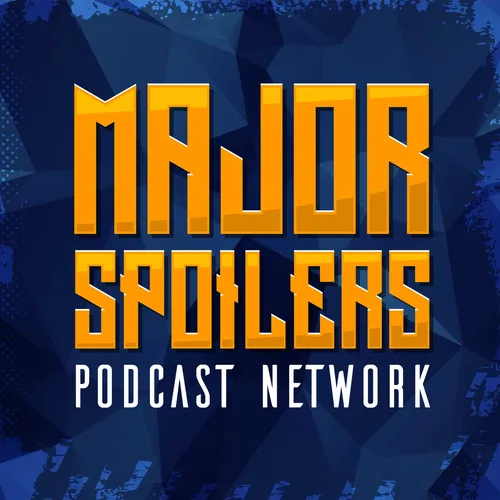Major Spoilers Podcast #343: Major Spoilers Classified #002: The Case of the Watchmen Sequel
- Author
- Major Spoilers
- Published
- Sat 17 Sep 2011
- Episode Link
- http://wp.me/p8YAd-sHE
![]()
In this episode: Dr. Peter Coogan joins the crew to discuss his theory that the sequel to Watchmen doesn't need to be written, because it already has...
Clues to the sequel to Watchmen
By Peter Coogan
This reading of Watchmen was inspired by a comment by Sara J. Van Ness in Watchmen as Literature (McFarland, 2010). She pointed to the excerpt from Under the Hood in chapter 1 and the paperclipped note on its first page, “‘We present here excerpts from Hollis Mason’s autobiography, UNDER THE HOOD, leading up t the time when he became the masked adventurer, Nite Owl. Reprinted with permission of the author’ (27). This ‘we’ is the novels only reference to the narrator” (p. 61). This comment inspired me to track down the identity of the narrator and it led to a series of discoveries about the novel.
Read through these clues and see if you can figure out why there is no need for a sequel to Watchmen.
How did Moore and Gibbons build the sequel into the text?
- These clues assume that Watchmen has been published diagetically (diagetic = in the world of the story).
- What does the diagetic publication of Watchmen imply about Veidt’s status in 1986?
- Who probably owns DC Comics in the world of Watchmen and what does that probable imply or indicate?
- I.9.4. What do Under the Hood and Gladiator have in common? What book is missing from Hollis Mason’s bookshelf? How is Hollis Mason’s authorship of Under the Hood connected to the authorship/source of the diagetic Watchmen?
- D1-1. Under the Hood excerpt. In the paperclipped note, who is “we”, where is “here”, and how do they have the permission of the author, Hollis Mason, who is dead? Who has inherited Hollis Mason’s copyright of Under the Hood.
- IV.15. Who has access to this conversation between Hollis Mason and Dr. Manhattan after Mason’s retirement?
- D-6. Who would have the ability to get Kovac’s arrest report and various childhood files? Or Malcom Long’s notebooks?
- VII.13-15. Who has access to the story of Dan and Laurie’s failed lovemaking?
- D-7. Why is “Blood from the Shoulder of Pallas” included? It doesn’t reveal anything about the background of the characters. It doesn’t supply any real information that contributes to an understanding of the larger story.
- IX. Who has access to Jon and Laurie’s conversation on Mars? This is a crucial conversation (more so than some of the invented conversations discussed below in the “Problems” section) because it explains why Jon returned to Earth and would therefore offer a real selling point for the book.
- D-9. Who has access to Sally Jupiter’s scrapbook?
- D-10. Who could have taken a picture of Veidt’s desktop, with calendar?
- XI. Who has access to Veidt’s discussions with Dan and Rorschach at Karnak?
- XII. Who has access to the events at Karnak?
- XII.20 What does the publication of Watchmen mean about Dan and Laurie’s agreement to keep Veidt’s plan secret?
Problems with this theory:
It seems unlikely that Moore and Gibbons intended this reading of Watchmen as they initially only planned 6 issues and originally intended to run letter pages after issue three and so included Under the Hood excerpts only as a placeholder until letter pages started. Moore originally planned to use MLJ’s Mighty Crusader characters and so started the story with the death of the Shield. All of these arguments are versions of the intentional fallacy (http://en.wikipedia.org/wiki/Intentional_fallacy).
Watchmen was published in September 1986, so the turnaround time from October of 1985 is problematic, but not impossible.
Some of the depiction of the characters has to be declared fictional or speculative under this theory: All the Bernie/Bernard interaction at the newsstand, the Shea/Hira interaction on the island and the freighter, the police officers interaction in chapter 5 (and elsewhere), Godfrey and Seymour at the New Frontiersman, Veidt’s interactions with his servants and his role in their deaths. But some of these interactions could have been recorded by Veidt in his bugging and so might have been found. And other interactions might have come out of Congressional testimony, other investigations, or interviews published as part of the coverage of the revelations of Veidt’s role in the squid attack (such as the war room in chapter 10).
Likely the inclusion of Tales of the Black Freighter is symbolic, either on the part of the source or “Moore” and “Gibbons” (the diagetic versions of Alan Moore and Dave Gibbons). It’s also likely that many of the other texts mentioned in the book (e.g. The Day the Earth Stood Still, “The Architects of Fear”) are also symbolic.
